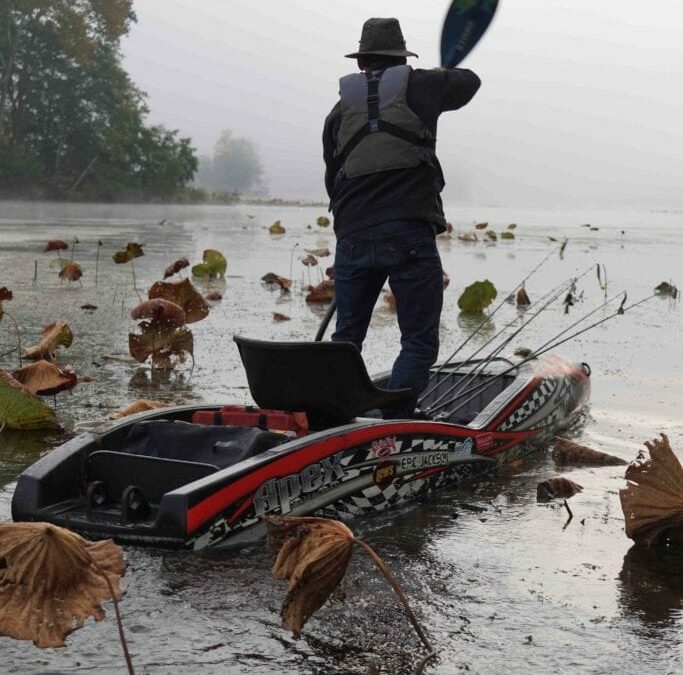
There is not a lot of good information presented related to kayak design, materials, and how they affect performance.
I have been in the business of designing and manufacturing kayaks out of both composites and plastic for the past 30 years. There are benefits to both types of materials and manufacturing methods. I’ll lay it out here, starting with the speed.
Speed is related to the shape of the hull of a kayak first. The amount of drag that comes from scratches, scuppers, and warpage second, and the weight third. The only caveat to the weight being third, is in the acceleration, weight affects that a lot.
Hull shape: Composite hulls maintain their designed shape and are always performing at their best. Plastic hulls are prone to warpage that comes from improper storage of the boats, roof racks, wear and tear, etc. Two otherwise equal hulls (one composite and one plastic) will perform the same when brand new, but the composite hull won’t degrade due to warpage.
There are many ways to design a hull- this article isn’t going to break down the different types in detail, but there are lifting bows and displacement hulls with flared out sidewalls, and piercing bows with a full planing hull. Length, width, rocker, etc. all determine the cruising or top-end speed of the hull.
Apex uses a piercing bow on a planing hull. This is the newest technology in hull design and a fast shape that goes through waves better and stays on the top better.
Because the Apex Watercraft are composite, no scupper holes are needed for structure. This is where plastic boats lose their speed. Scupper holes (most plastic kayaks have 6-8 of them) cause major turbulence and water drag to an otherwise fast hull shape. They are used to drain water that gets into a sit-on-top kayak cockpit area and provide vertical support for the flexible soft plastic they are made from. Apex drains the water out of the back of the boat to avoid slowing the boat down with scuppers.
Acceleration: Here is another area where composite kayaks shine for speed. The weight difference between most composite kayaks and plastic kayaks is substantial, often 1/3rd to 1/2 of the weight. Your first paddle strokes to get the boat moving have way more effect. When kayak fishing, you are typically starting and stopping all day long to fish. You’ll find that a composite fishing kayak takes much less energy to get up to speed and will go faster off the start every time.
Scratches, dents, and warps: Plastic boats tend to get deep scratches that create additional drag with use. Dents and warpage add to that drag. A brand new plastic boat will always be faster than a used one. Composite boats, on the contrary, are made from hard materials that don’t warp and are not prone to scratches beyond the surface, assuring that the hull remains efficient even after years of use.
The best hulls combine the right hull shape (for proper stability, speed, and turning ability) with the best materials for the job. Composites are the best for speed, and maintaining shape over a long time. Plastic is great for regular abuse on rocks, dragging the boat around, and for being cheaper. Composite boats are more expensive due to the cost of materials and the labor to produce them. Each boat is hand made and a typical mold cycle time is 24 hours versus 40 minutes for plastic. There will always be a place for plastic boats, but for the discerning paddler or fisherman, composites will offer performance and feel that plastic never can.

